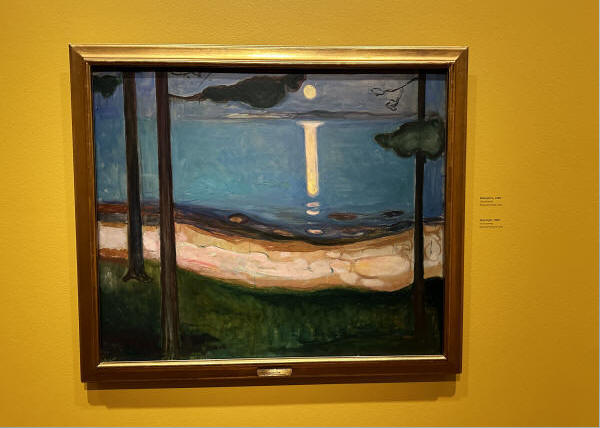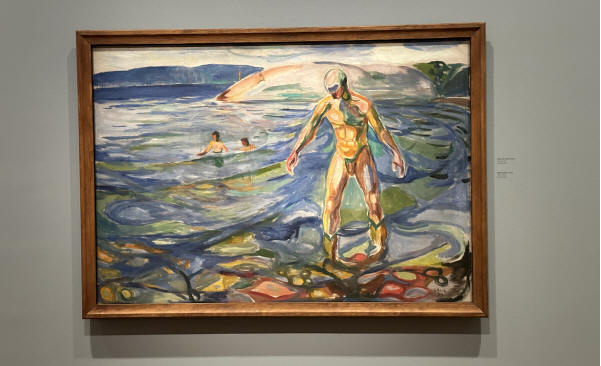But it gets better, because it also did a lot to personalize the artist instead of just focusing on his art. Through recreations of his studio and house, along with anecdotal stories, you come to realize that beneath that paint-splattered exterior lived a person much like you and me. Like the time he stole money from his ex-fiancé who tried to commit suicide by drinking morphine and used it to buy a bottle of cognac, then returned to drink it with her, and when they got in a drunken argument she pulled out a revolver and shot him.
So, you know, your basic salt-of-the-earth kind of guy.
 Lego version |
Early version of the scream on display in the museum |

The museum itself is in a large multistory building that's architecturally interesting, by which I mean "there's a sky bar at the top."
|
|
And, digressing for a minute (but it had to fit in somewhere), it sits across a narrow channel from the even more architecturally interesting Opera House (by which I mean "you can climb the roof"). The interior was very cool as well. There were panoramic views of the harbor from the top.

|
|
|
|
|
|
Inside the Munch Museum, they had different themed sections on each floor. The first was a study of his landscapes and nature paintings called "Beneath The Sun," and were my personal favorite of the entire collection.
|
|
|
||

In the section about love, you definitely felt the ambiguity Munch felt about it and the fairer sex. Most of the paintings didn't feel particularly joyful; quite the opposite.
Therer were portraits and giant murals and a Munch video game (which we did not play). And there was the special screening room for three different versions of "The Scream" that were shown in rotation, in dim light, for preservation reasons. With the portraits, again, it was fascinating to see how Munch could go from very abstract, almost cartoonish caractatures, to pen and ink, to to almost photorealistic renditions of people.
Along the way, there were also little peep holes that were apparently intended for children but were kind of interesting to look into, even if you had to get down on your knees to do it (the controls changed the lighting inside the peephole).
There was also an extensive display of his woodblock art, including the blocks and prints, along with the tools he used to make them.
And there was a recreation of rooms from his house flattened into a one floor mini-maze, with original furniture and artifacts from his life, along with a broken up biography told in little snippets that were sometimes interactive.

